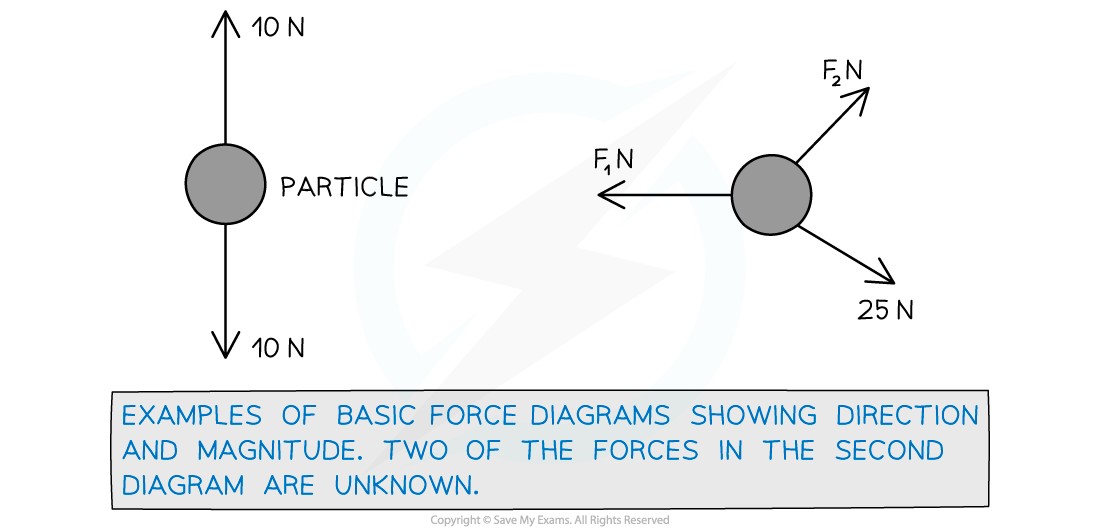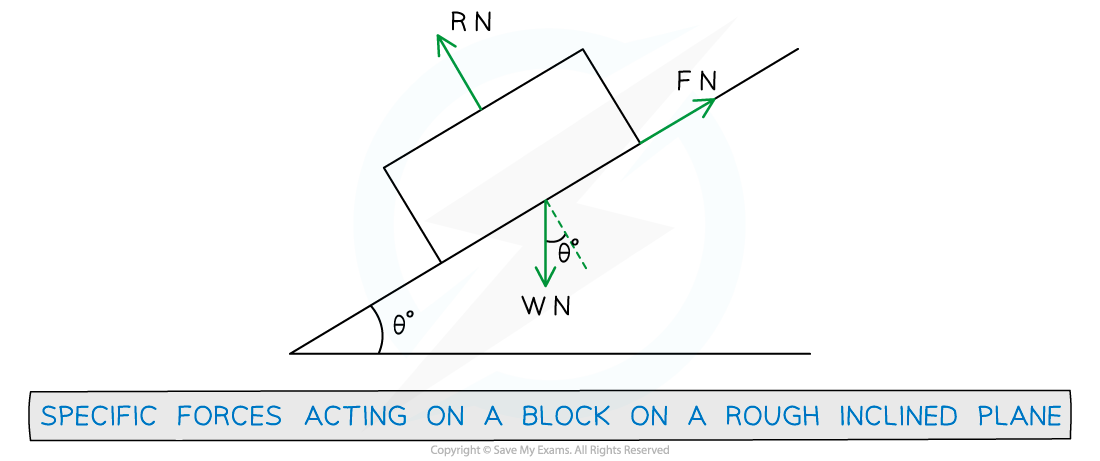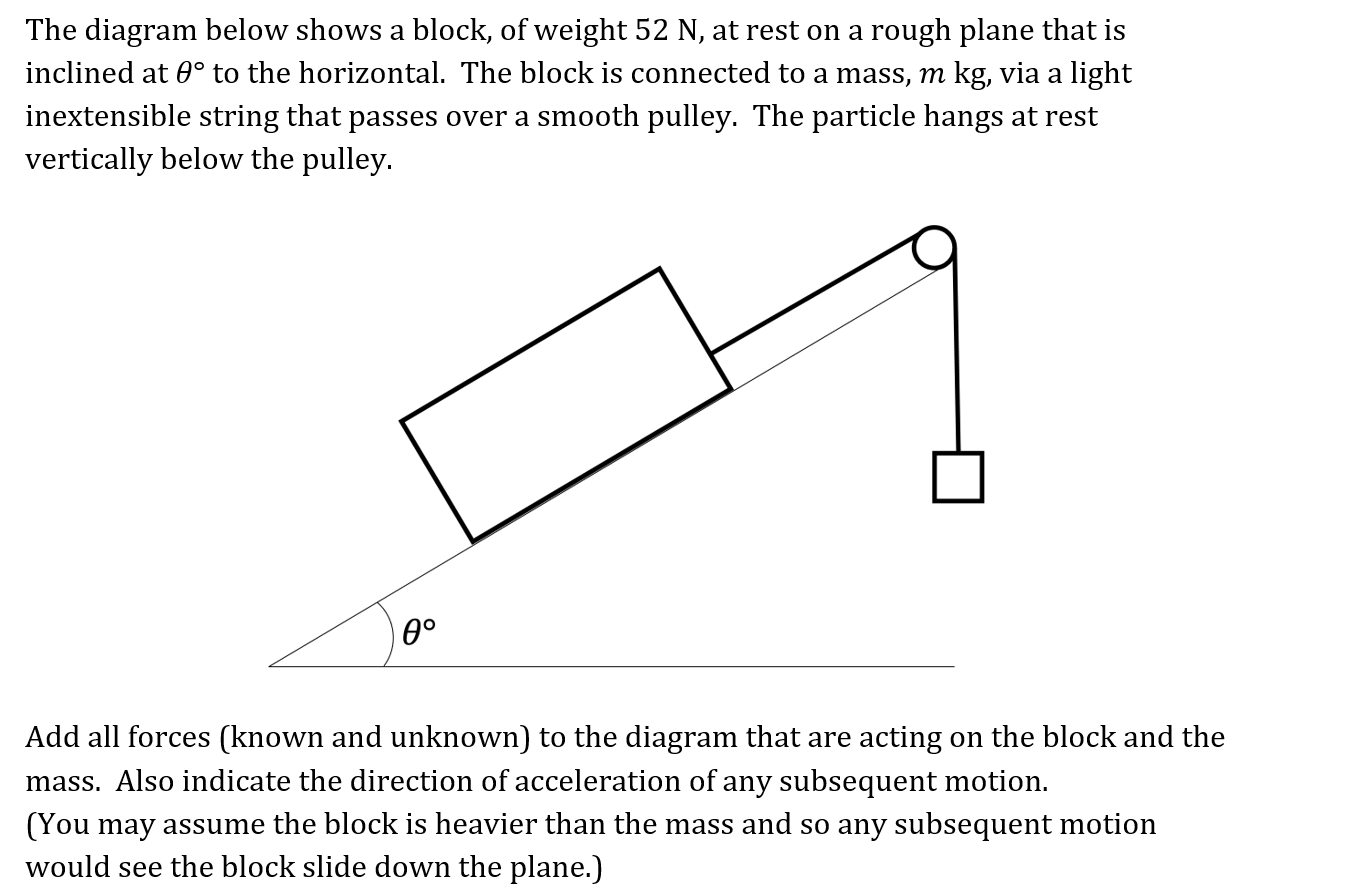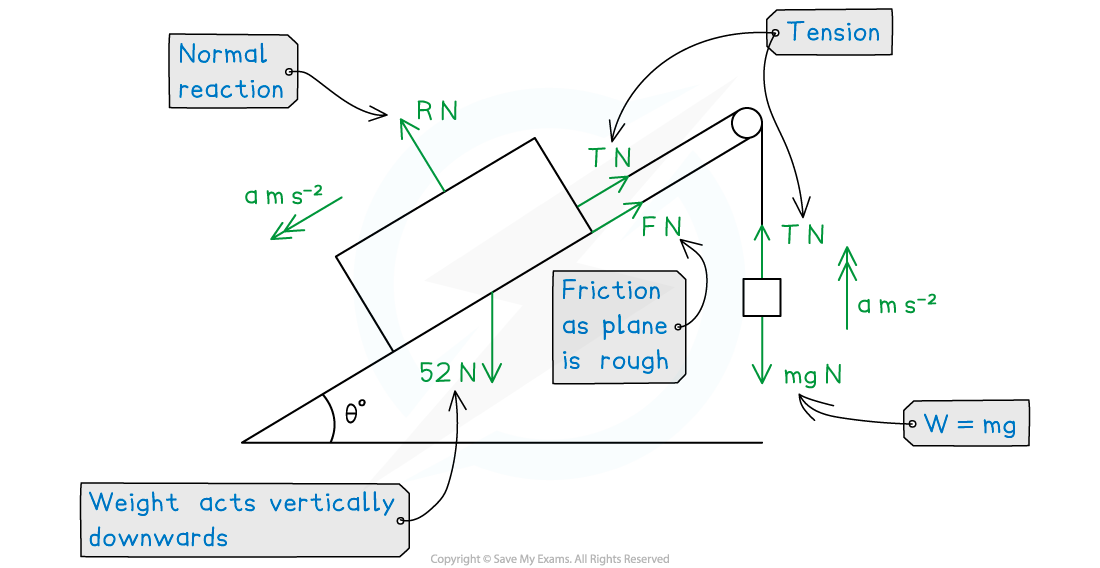- 翰林提供学术活动、国际课程、科研项目一站式留学背景提升服务!
- 400 888 0080
AQA A Level Maths: Mechanics复习笔记3.1.1 Force Diagrams
Force Diagrams
Why do we need force diagrams?
- Force diagrams are used to help understand a given scenario and show which forces are acting on which particles and in which direction they are acting
- In diagrams an arrow is used to represent a force acting on a particle which shows the direction in which the force is acting
- The magnitude of the force is normally written next to its arrow

What types of forces could be involved?
- Specific types of force encountered (which may not be mentioned in the question nor labelled on a given diagram) are: weight (W N), tension (T N), thrust (T N), friction (F N) and normal reaction (RN)

- Remember that the diagram is drawn to help understand the scenario - cars, blocks, etc are modelled as particles occupying a single point in space and so all forces acting on the car, block, etc act at that same single point
- The main forces that you will see are:
- tension (a “pulling” force) acts away from a particle,
thrust (a “pushing” force) acts towards it - weight is W = mg where m kg is the mass of the particle and g is the acceleration due to gravity – usually g = 9.8 m s-2
- If you are told, or are using g = 9.8 m s-2 ensure you round your final answer to two significant figures (as 9.8 is rounded to 2 s. f.)
- If you are told to use g = 10 m s-2 ensure you round your final answer to one significant figure (as 10 is rounded to 1 s. f.)
- friction acts parallel to the surface in the opposite direction to motion
- the normal reaction acts perpendicular to the surface (and friction)
- tension (a “pulling” force) acts away from a particle,
Worked Example


Exam Tip
- Always draw a force diagram if appropriate.
- If a diagram is already given then add to it as you progress through the question.
- If a diagram is too small or it gets too complicated then draw a new diagram.
- You may be able to manage with just drawing the section of the diagram you are dealing with in any particular question part.
- Unless told otherwise, use g = 9.8 m s-2 and round your final answer to two significant figures.
- Some questions may direct you to use g = 10 m s-2 in which case round your final answer to one significant figure.
转载自savemyexams

最新发布
© 2026. All Rights Reserved. 沪ICP备2023009024号-1









